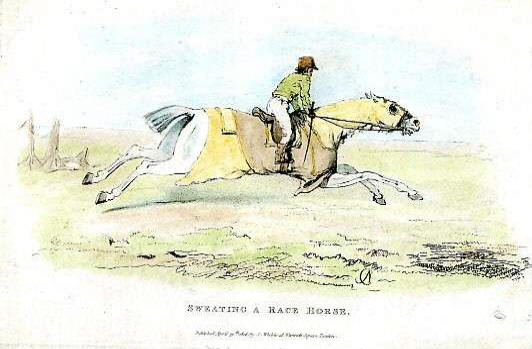The traditional
manner of
'Sweating a race horse' in 1816

Admiral Henry John Rous argued in an article in The Field 1 that the traditional practice of sweating racehorses to remove unwanted fat by means of heavily clothed four or five mile gallops was unnecessary. It left the horse exhausted, fit the following day only for a walk, and frequently resulted in accidents injuring the horse’s legs. But sweating in a Turkish bath was far more effective and left the horse lively and in peak condition.
This item is from the collection of the Victorian Turkish Baths Project
This page enlarges an image or adds to the information found below:
Turkish baths for animals. Part 3: Turkish baths for racehorses
How animals came to have Turkish baths

Victorian Turkish Baths: their origin, development, and gradual decline



Comments and queries are most welcome and can be sent to:
malcolm@victorianturkishbath.org
The right of Malcolm Shifrin to be identified as the author of this work
has been asserted by him
in accordance with the Copyright, Designs and Patents Act 1988
© Malcolm Shifrin, 1991-2023